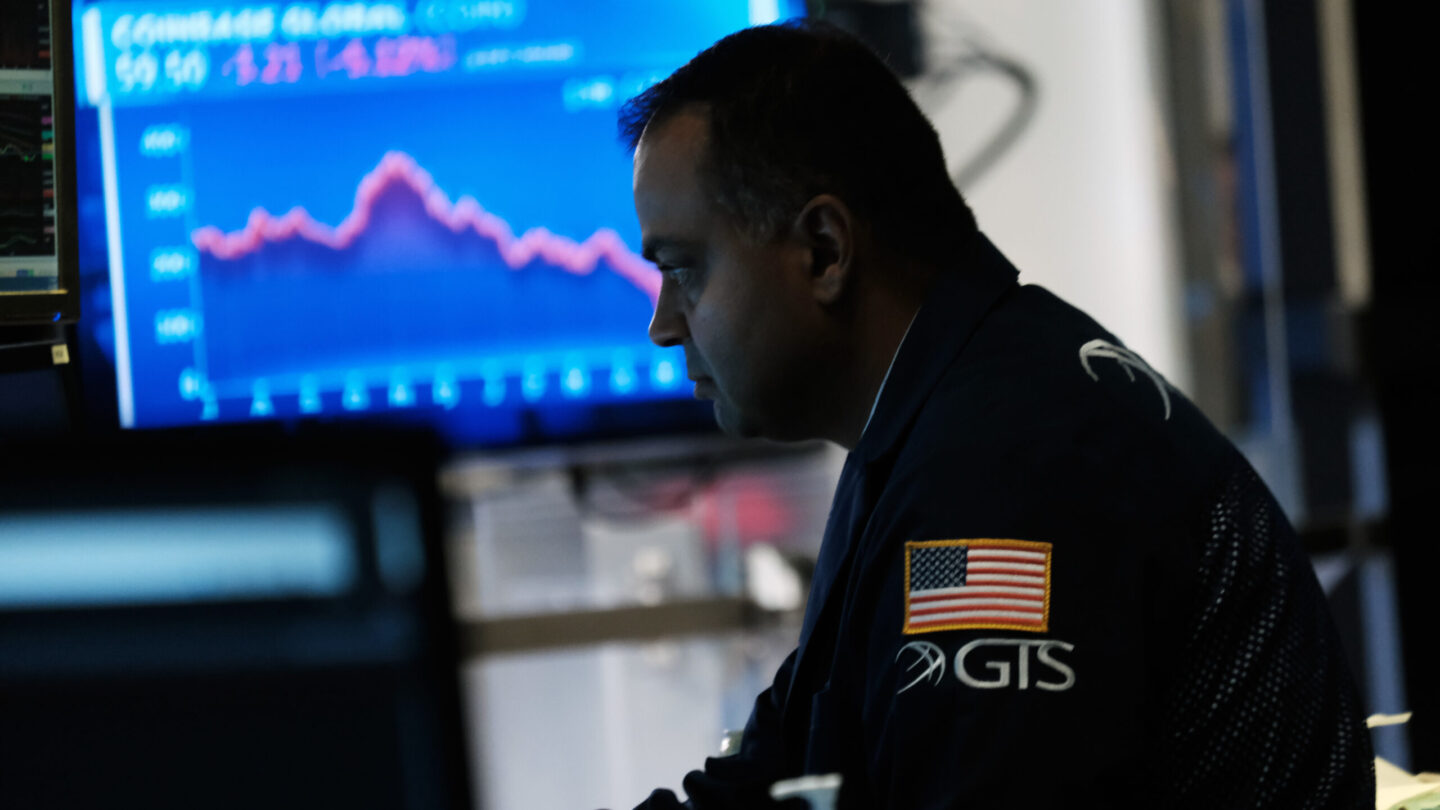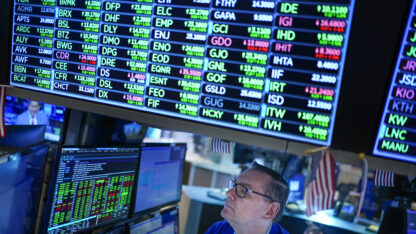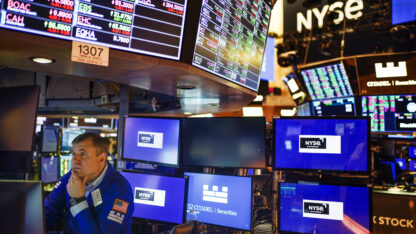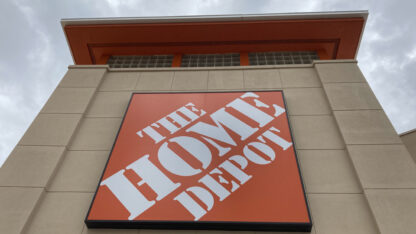This has been the worst start to a year for stocks in more than half a century.
A record-setting run fueled by cheap money has ended, and Wall Street is having a hard time adjusting to a new reality. With the Federal Reserve aggressively hiking interest rates to fight high inflation, the economic landscape has changed dramatically.
At the mid-year point of 2022, the tech-heavy Nasdaq has fallen by almost 30% and the broad-based S&P 500 is down by around 20% in the first six months of the year. Both indexes are in bear market territory, and the Dow Jones Industrial Average is in a correction. Year to date, it is down about 15%.
“When interest rates go up, it changes all the math,” says Charles Bobrinskoy, vice chairman of Ariel Investments. “It changes the math of buying a car, buying a house, buying a bond, and it changes the value of particularly tech stocks, whose earnings are far off in the future.”
And that means that all that whipsawing on Wall Street of the last few months — including the massive single-day swings of more than 1,000 points — reflects real nervousness among investors. They’re worried the Fed may tip the U.S. economy into a recession.
While that volatility has been driven mainly by rising interest rates and inflation, it has been compounded by numerous geopolitical risks: COVID-19 continues to wreak havoc and lockdowns in China, global supply chains remain clogged and Russia’s invasion of Ukraine continues.
High growth stocks were the first to fall
Historically, when interest rates rise and borrowing costs go up, investors pull out money from the riskier parts of the economy. High growth companies and tech stocks are the first to see their stocks fall.
This time is no different. The S&P 500’s worst stock performer to date is Netflix, which is down 70%. It’s an incredible reversal for a company that saw it share price skyrocket during the pandemic, when the streaming service became a lifeline for the locked down. The second-worst performer is Etsy, the online marketplace for art and craft from artisans, which is down almost 65%.
There is one bright spot
Really, the only bright spot in stocks has been energy. Russia’s invasion of Ukraine drove oil and natural gas prices higher, and gasoline and diesel prices have set new records. That rise in commodities prices has benefitted global energy giants. Many of them raked in record profits.
So far, the best performer on the S&P 500 this year has been Occidental Petroleum, which has almost doubled in price. Valero Energy returned 41% and Exxon Mobil, Hess, and Halliburton are also winners.
It all started one fateful day in January
What is perhaps most startling to Wall Street is how quickly everything changed.
The first signal came on January 5, when a readout of a Fed meeting that took place at the end of last year was released. Those minutes showed how Fed members saw rising inflation as a major risk to the economy and they would have to start raising rates sooner than expected.
The words were dry, as they often are, but the summary signaled a dramatic negative shift in the Fed’s stance. The reaction in the markets was swift. All the major stock market indexes fell that day, with the Nasdaq dropping the most — over 3%.
From there, it only got worse
It was just the beginning. Fed officials continued to affirm their negative stance over the next few weeks and months, the inflation numbers got worse, and that combination sent a spiral of pessimism through the markets.
To combat inflation, which is running at a 40-year high, the Fed has acted aggressively. It’s raised the benchmark interest rate three times so far this year, including one earlier this month by three-quarters of a percentage point — the biggest hike since 1994.
Yung-Yu Ma, the chief investment strategist at BMO Wealth Management, says it has been a “very fast-moving environment, where inflation continued to surprise to the upside, and the Fed’s own projections of how quickly it was going to raise interest rates … kept surpassing expectations.”
The Fed first underestimated inflation and is now playing catch-up
Those expectations were also dramatically different from last year, when both Fed Chair Jerome Powell and Treasury Secretary Janet Yellen seemed confident inflation was going to fade — that it would be a short-lived consequence of the U.S. emerging from the darkest days of the pandemic.
Now we know that they were both underestimating the path of inflation and were slow to act. A few weeks ago, Yellen admitted she had misread the moment. “I think I was wrong then about the path that inflation would take,” she told CNN.
This year’s dramatic rate increases are a reflection of the Fed playing catch-up, but some fear that it also signals the start of a new era of higher interest rates after over a decade of easy monetary policy. Some believe that will be necessary to deal with higher inflation going forward too.
“Inflation is going to be higher for a longer period of time,” says Gargi Chaudhuri, head of iShares investment strategy at BlackRock. “Maybe not today’s 8.6%, but still much higher than the pre-pandemic level.”
She is not among a growing number of portfolio managers who think we will see a recession in the next six months. Like everyone else, she is paying close attention to economic data. That includes reports on the jobs and inflation from the federal government, but also quarterly earnings from companies.
But can the Fed wrestle inflation down, or will its actions lead to recession?
The Federal Reserve is administering tough medicine to the U.S. economy and policymakers are aware there are risks. If the Fed’s interest rate increases cool the economy too much, it could lead to a deep downturn and even a recession.
Even Powell doesn’t discount that. Speaking at a European Central Bank conference on Wednesday he said: “Is there a risk we would go too far? Certainly there’s a risk.”
There is a huge desire, among policymakers and politicians especially, to see changes immediately, but to everyone’s frustration, it will take time to see if the Fed’s medicine is working.
If, in a few months, there are indications that the Fed is succeeding at bringing inflation under control, markets will stabilize. But if it becomes clear the Fed isn’t getting a handle on inflation, all bets are off.
Copyright 2022 NPR. To see more, visit https://www.npr.org.
9(MDAxODM0MDY4MDEyMTY4NDA3MzI3YjkzMw004))

9(MDAxODM0MDY4MDEyMTY4NDA3MzI3YjkzMw004))








